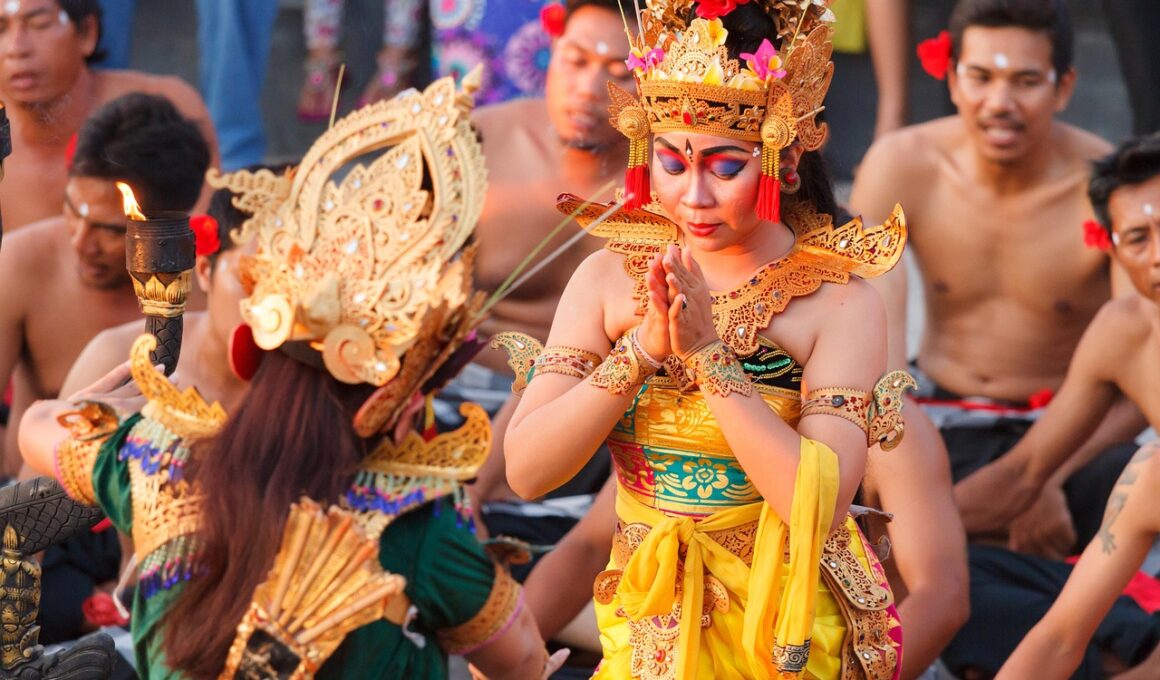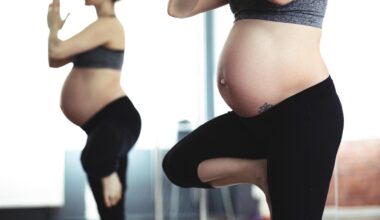Dance Fitness in Different Cultures: Traditions and Trends
Dance fitness transcends geographic boundaries, deeply interwoven in diverse cultures. In Latin America, Zumba has gained immense popularity, merging traditional dances with cardiovascular workouts. This vibrant style engages participants through rhythmic music, promoting community bonding and cultural appreciation. Afrobeat dance fitness combines African rhythms with aerobic routines, emphasizing body strength and flexibility. Similarly, Bollywood-inspired classes have emerged, bringing the joy of Indian cinema to dance fitness enthusiasts globally. These cultural dance forms allow exercisers to immerse themselves in the essence of various traditions while achieving fitness goals. Conversely, cultures like the Hula in Hawaii emphasize flowing movements, which blend physical exercise with storytelling. Participants learn about Polynesian culture and history through these enchanting dances while reaping fitness benefits. The fusion of traditional dance with fitness provides a holistic approach to health, encouraging an inclusive environment for people of all backgrounds. Through such practices, dance fitness cultivates not merely physical well-being but emotional and cultural connections, enriching lives significantly. As individuals explore these global dance trends, they embrace wellness while celebrating distinct heritages. This cultural exchange through dance is vital for community bonding and supports an active, joyous lifestyle.
Global Dance Fitness Movements
The global phenomenon of dance fitness continuously evolves, influenced by differing cultural preferences and health trends. In Europe, for example, dance styles like Ballet Fitness have attracted many fitness enthusiasts. This fusion of classic ballet movements and contemporary workouts builds strength, flexibility, and grace, appealing to various age groups. Additionally, Hip Hop dance classes have emerged, focusing on urban culture and rhythm-based workouts. These classes not only enhance physical fitness but also embrace individual expression and creativity. Conversely, in Asia, dance fitness often combines traditional practices like Tai Chi with modern music, creating a unique atmosphere for relaxation and conditioning. Countries like Thailand have seen the rise of Muay Thai dance fitness programs, where participants learn martial arts techniques through dance. This melding of disciplines captures the essence of cultural heritage while serving contemporary fitness needs. In Australia, local dance styles like bush dancing are integrated into fitness programs, offering a fun and social environment for participants. Collectively, these dance fitness movements reflect the multicultural landscape, promoting diversity while encouraging people to stay healthy and active through engaging activities.
Dance fitness trends often draw inspiration from popular music genres, influencing the selection of moves and styles used in various classes. For instance, the rise of K-Pop has led to the creation of energetic dance workouts that incorporate catchy choreography associated with Korean pop music. This trend has gained immense popularity across the globe, particularly among younger demographics seeking to express themselves while getting fit. Similarly, many fitness classes now integrate popular songs into their routines, allowing participants to experience a connection with current music trends. Cheerdance fitness has also garnered attention, combining traditional cheerleading moves with dance. This unique style promotes teamwork and camaraderie among participants, encouraging them to motivate each other while exercising. These fusion classes highlight the adaptability of dance fitness, showcasing how global influences can create inclusive environments. Furthermore, they cater to those looking for variety in their workout regimes, keeping motivation high. Additionally, the accessibility of online dance fitness classes has sparked an international trend, enabling individuals to join from home. This digital shift allows people to embrace new styles, fostering a growing global community united by a shared love for dance and fitness.
Cultural Impact on Dance Fitness
The cultural impact of dance fitness extends beyond mere exercise; it fosters a sense of belonging and identity. Many dance fitness classes celebrate local customs, providing an opportunity for participants to connect with their roots. For instance, Bhangra dance fitness enthusiasts not only enjoy a lively workout but also engage with Punjabi culture. This cultural immersion promotes inclusivity, as individuals from diverse backgrounds come together to appreciate and learn different traditions through dance. Additionally, dance fitness trends often respond to societal changes, addressing issues like mental health and self-expression. Many practitioners find comfort in the communal environment of dance classes, as they create a supportive network. This group dynamic encourages individuals to express their emotions and foster friendships, significantly benefitting mental health. Moreover, dance fitness has become a form of art, where participants express themselves creatively through movement. In some cases, teachers incorporate storytelling elements, such as narratives around figurative movements in dance fitness. This makes the experience not merely about physical exertion but philosophical and emotional growth, showcasing the multifaceted nature of dance fitness in society.
Participating in dance fitness has tangible health advantages, contributing to improved physical and mental well-being. Research shows that engaging in these rhythmic exercises enhances cardiovascular health, flexibility, and strength. Dance fitness routines require coordination and balance, positively impacting participants’ motor skills and stability. As individuals immerse themselves in varied dance styles, they often experience increased confidence and self-esteem. By mastering new techniques or dance genres, participants celebrate their achievements, promoting a positive self-image. Furthermore, dance fitness facilitates stress relief, offering a joyful outlet to unwind from daily pressures. The communal aspect fosters social connections, enhancing overall well-being through friendships formed in supporting environments. When participants enjoy their routines, motivation increases, encouraging them to commit to regular exercise. The interplay between joyful movement and health is significant, as enjoyable workouts can lead to healthier lifestyle choices overall. Moreover, these classes often highlight the importance of body positivity, inspiring individuals to embrace their unique selves. As communities come together to dance, the focus on fun, celebration, and fitness becomes a powerful catalyst for change, merging personal goals with cultural engagement.
Future of Dance Fitness Trends
The future of dance fitness trends appears bright and filled with potential. As technology continues to advance, virtual dance classes are reshaping how people engage with fitness. With the availability of interactive platforms, individuals can connect globally, transcending geographical limits. This digital evolution enables instructors to reach broader audiences, offering diverse classes and styles tailored to various interests. Additionally, wearable technology such as fitness trackers increasingly captures individuals’ dance fitness progress, motivating them to achieve personal goals. The fusion of dance fitness with wellness trends further emphasizes the holistic approach to health. Practices like mindful dance encourage participants to focus on the mind-body connection, incorporating elements of meditation into physical routines. In terms of diversity and inclusion, dance fitness classes are likely to become even more representative of the global community. As awareness of cultural sensitivity grows, instructors will strive to feature diverse dance forms, igniting appreciation for different traditions. Ultimately, dance fitness will continue to evolve as society embraces innovative techniques and ideas, fostering global connection, cultural exchange, and a shared pursuit of wellness.
In conclusion, dance fitness offers a vibrant tapestry that celebrates cultural diversity while promoting health and well-being. This captivating blend of movement and music allows individuals to express themselves while exploring various traditions and rhythms. From Zumba to Bhangra, each dance style embodies cultural narratives, enriching the overall experience of exercise. The community aspect fostered by dance fitness serves as a support network, where participants form lasting bonds and friendships. As trends evolve, embracing new music and technologies, dance fitness remains accessible, continuing to draw people from all walks of life. Furthermore, the importance of mental health has become prominent within dance fitness, highlighting its capacity to nurture and heal. Collectively, these elements enhance the attractiveness of dance fitness, making it an appealing choice for health-conscious individuals. As we journey into the future, dance fitness will undoubtedly flourish, resonating globally with its transformative power. Each step, sway, and jump carries the potential to inspire and uplift, reminding us of our shared humanity through joyful movement. Embracing the richness of cultural traditions through dance fitness allows us to celebrate uniqueness while maintaining connection.


